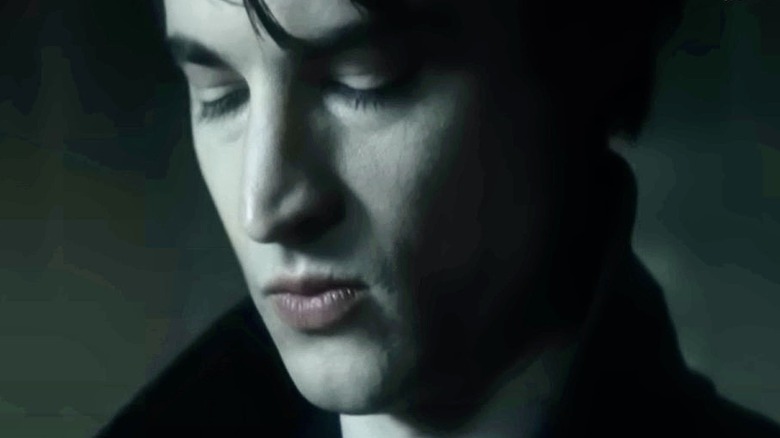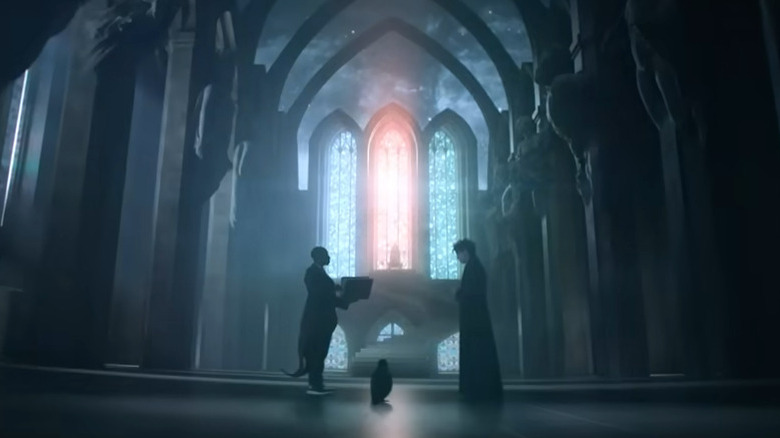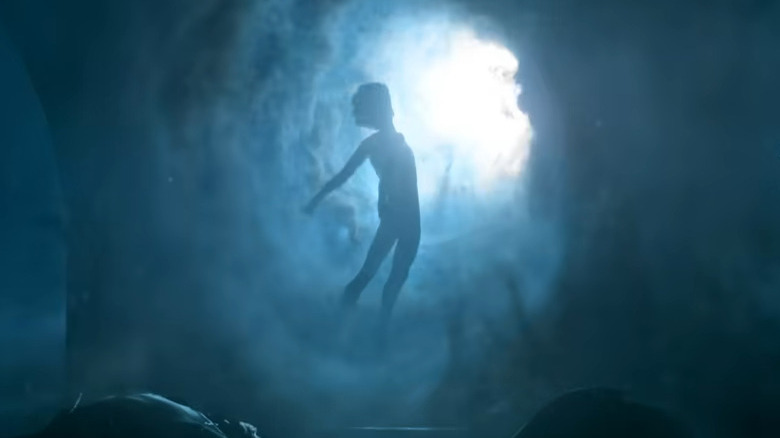The Sandman's Dreaming Explained
Contains spoilers for "The Sandman" Season 1
"The Sandman" is the most recent adaptation of Neil Gaiman's massive catalog of stories, a catalog that stretches across practically every single medium, platform, and streaming service. The DC comic has experienced a wild journey, in which the contents led to a spinoff series, which in turn led to the Fox-then-Netflix series "Lucifer." As for "The Sandman," it became an Audible drama that featured everyone from James McAvoy to David Tennant. Now, it's a Netflix series starring talents such as Tom Sturridge, Jenna Coleman, and Kirby Howell-Baptiste.
But that's enough background. For those who have yet to consume any "Sandman" related media, the story (mostly) follows Morpheus, the Lord of Dreams, a physical manifestation of the power of dreaming and stories. As one of the seven Endless (other deific physical manifestations of crucial human concepts), Morpheus is called to tend to humanity's needs until society greedily imprisons him. Without spoiling too much, the whole ordeal sort of sours his perception of people, and the series follows the recovering of his power and relearning how to care for those humans.
There's a lot of expositional mumbo jumbo going on here. Such is the way for deity mythos. Let's break down one facet of Gaiman's story — The Dreaming.
The Dreaming is a kingdom, inhabited by all who dream
Morpheus, aka Dream (he goes by many names, something the Netflix series briefly touches upon), doesn't call our plane of existence home. As the Lord of Dreams, he rules over his magical plane, known as The Dreaming. In its own way, it's a physical, tangible place, but also, it's not. The Dreaming is where dreams happen, every dream — the silly and the dark and the serious and the inappropriate. It's sort of a colossal Minecraft server that's permanently stuck in creative mode so that everyone who participates reshapes it with their own weird image.
Morpheus controls the whole thing. He resides in a castle of his creation that watches over The Dreaming, tending to its inhabitants and ensuring that everything remains manageable. It's easy to assume that his kingdom is a trivial place, considering the absurd nonsense that populates most of our dreams. Still, Morpheus constantly reminds anyone who underestimates his power that dreams are what keep humanity alive. Without dreams, there's no ambition, no creativity, no hope.
And that's exactly what the first episode of "The Sandman" depicts. After Morpheus is imprisoned, The Dreaming crumbles. However, when he returns, The Dreaming begins to stabilize. That's the most exciting and dangerous aspect of The Dreaming — it's intrinsically linked to Morpheus' power and well-being.
The Dreaming is under Morpheus' control
When everything's in order, Morpheus can use The Dreaming to achieve some fantastic feats. Should he require, Morpheus can fast travel between sleeping minds, human and animal alike. He also has been known to turn The Dreaming into a prison for anyone who abused their waking hours. Most importantly, within The Dreaming, he can create sentient life. Lucienne (Vivienne Acheampong) — or Lucien, depending on the version — is one example of a living dream that populates The Dreaming. The caveat to such entities is that what the Dream Lord giveth, he can also taketh away (that sentence doesn't have the same gravitas without the old-timey verbiage).
Horrifyingly, each of the Endless has a similar realm in which they are the sovereign, even Death. For now, it's enough to know that The Dreaming is magical and terrifying, so maybe don't harass the guy in charge because Neil Gaiman hopes "The Sandman" will last for quite some time.


